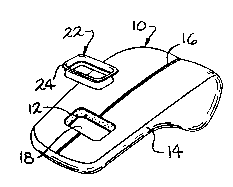Une partie des informations de ce site Web a été fournie par des sources externes. Le gouvernement du Canada n'assume aucune responsabilité concernant la précision, l'actualité ou la fiabilité des informations fournies par les sources externes. Les utilisateurs qui désirent employer cette information devraient consulter directement la source des informations. Le contenu fourni par les sources externes n'est pas assujetti aux exigences sur les langues officielles, la protection des renseignements personnels et l'accessibilité.
L'apparition de différences dans le texte et l'image des Revendications et de l'Abrégé dépend du moment auquel le document est publié. Les textes des Revendications et de l'Abrégé sont affichés :
| (12) Brevet: | (11) CA 1325856 |
|---|---|
| (21) Numéro de la demande: | 1325856 |
| (54) Titre français: | HOUSSE POUR SIEGE DE VOITURE |
| (54) Titre anglais: | VEHICLE SEAT TRIM ASSEMBLY |
| Statut: | Périmé et au-delà du délai pour l’annulation |
| (51) Classification internationale des brevets (CIB): |
|
|---|---|
| (72) Inventeurs : |
|
| (73) Titulaires : |
|
| (71) Demandeurs : | |
| (74) Agent: | MACRAE & CO. |
| (74) Co-agent: | |
| (45) Délivré: | 1994-01-04 |
| (22) Date de dépôt: | 1989-03-08 |
| Licence disponible: | S.O. |
| Cédé au domaine public: | S.O. |
| (25) Langue des documents déposés: | Anglais |
| Traité de coopération en matière de brevets (PCT): | Non |
|---|
| (30) Données de priorité de la demande: | ||||||
|---|---|---|---|---|---|---|
|
Abstract of the Disclosure
A seat trim assembly particularly adapted for
automotive seat backs having a center hole within the head
restraint area. A halo ring member is provided having a
radially projecting flange which is large enough to prevent the
halo ring from being pulled completely through the seat back
center hole. The inner edge of the halo ring forms a reversely
bent edge channel. A break-over strip is stitched or bonded to
the trim cover and is inserted within the halo ring edge
channel. Once the break-over strip is placed into the edge
channel, the halo ring is pulled such that the radially
projecting flange supports a portion of the trim cover
surrounding the seat back hole. In an alternate embodiment,
the halo ring is integrated into a seat back rear panel.
Note : Les revendications sont présentées dans la langue officielle dans laquelle elles ont été soumises.
Note : Les descriptions sont présentées dans la langue officielle dans laquelle elles ont été soumises.

2024-08-01 : Dans le cadre de la transition vers les Brevets de nouvelle génération (BNG), la base de données sur les brevets canadiens (BDBC) contient désormais un Historique d'événement plus détaillé, qui reproduit le Journal des événements de notre nouvelle solution interne.
Veuillez noter que les événements débutant par « Inactive : » se réfèrent à des événements qui ne sont plus utilisés dans notre nouvelle solution interne.
Pour une meilleure compréhension de l'état de la demande ou brevet qui figure sur cette page, la rubrique Mise en garde , et les descriptions de Brevet , Historique d'événement , Taxes périodiques et Historique des paiements devraient être consultées.
| Description | Date |
|---|---|
| Inactive : CIB de MCD | 2006-03-11 |
| Inactive : CIB de MCD | 2006-03-11 |
| Le délai pour l'annulation est expiré | 1998-01-05 |
| Lettre envoyée | 1997-01-06 |
| Accordé par délivrance | 1994-01-04 |
Il n'y a pas d'historique d'abandonnement
Les titulaires actuels et antérieures au dossier sont affichés en ordre alphabétique.
| Titulaires actuels au dossier |
|---|
| HOOVER UNIVERSAL, INC. |
| Titulaires antérieures au dossier |
|---|
| ALAN J. SELBERT |